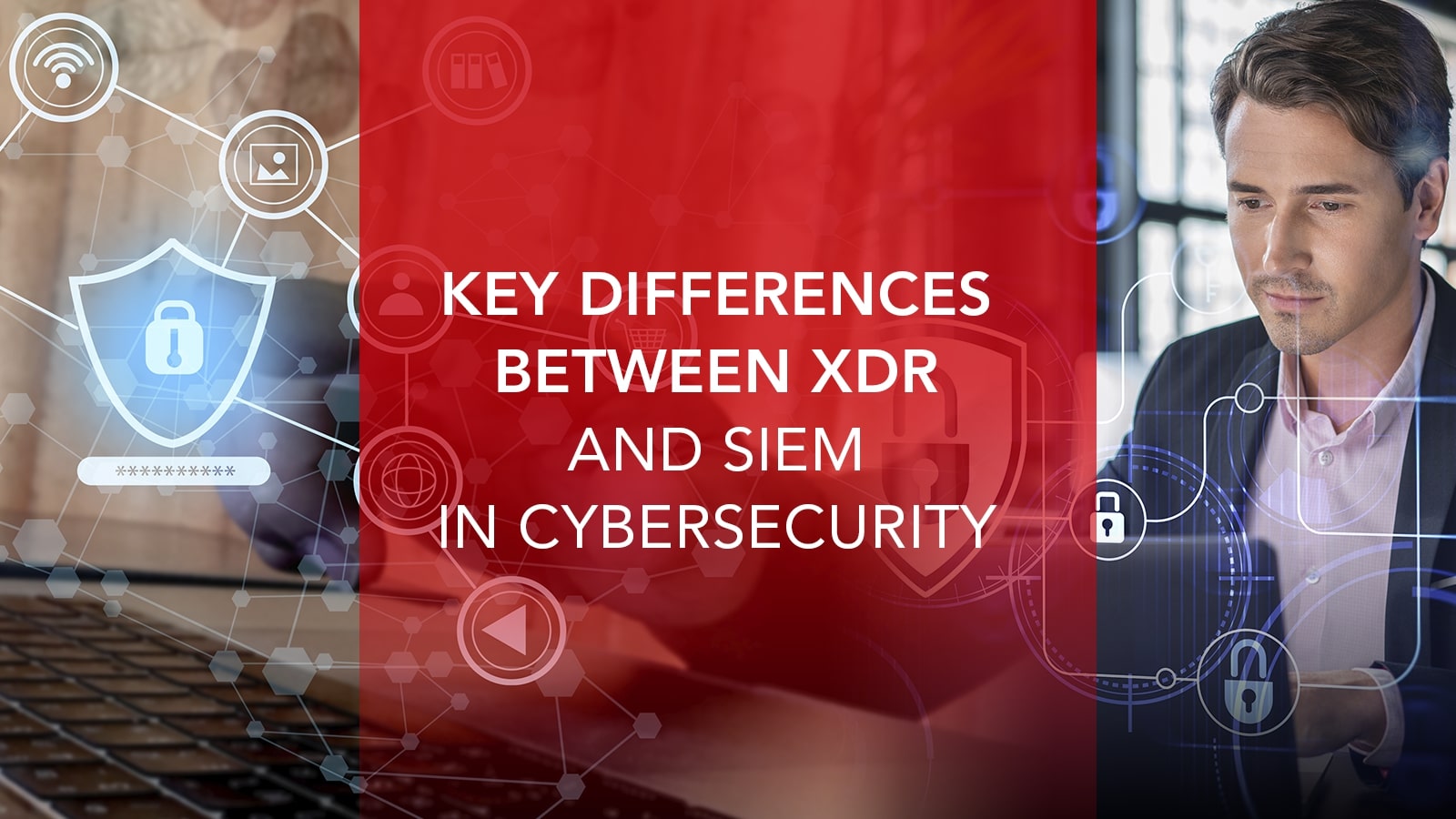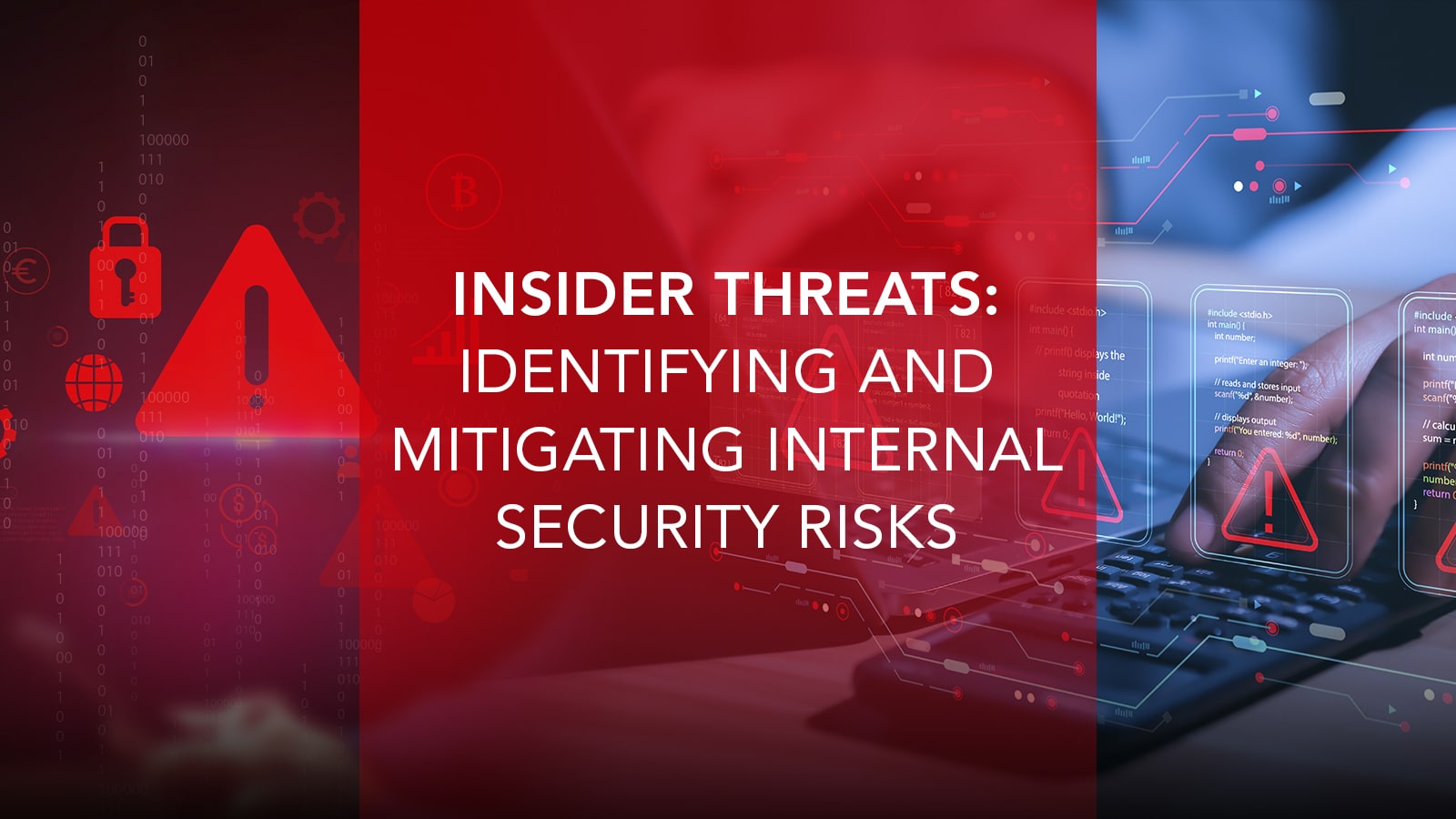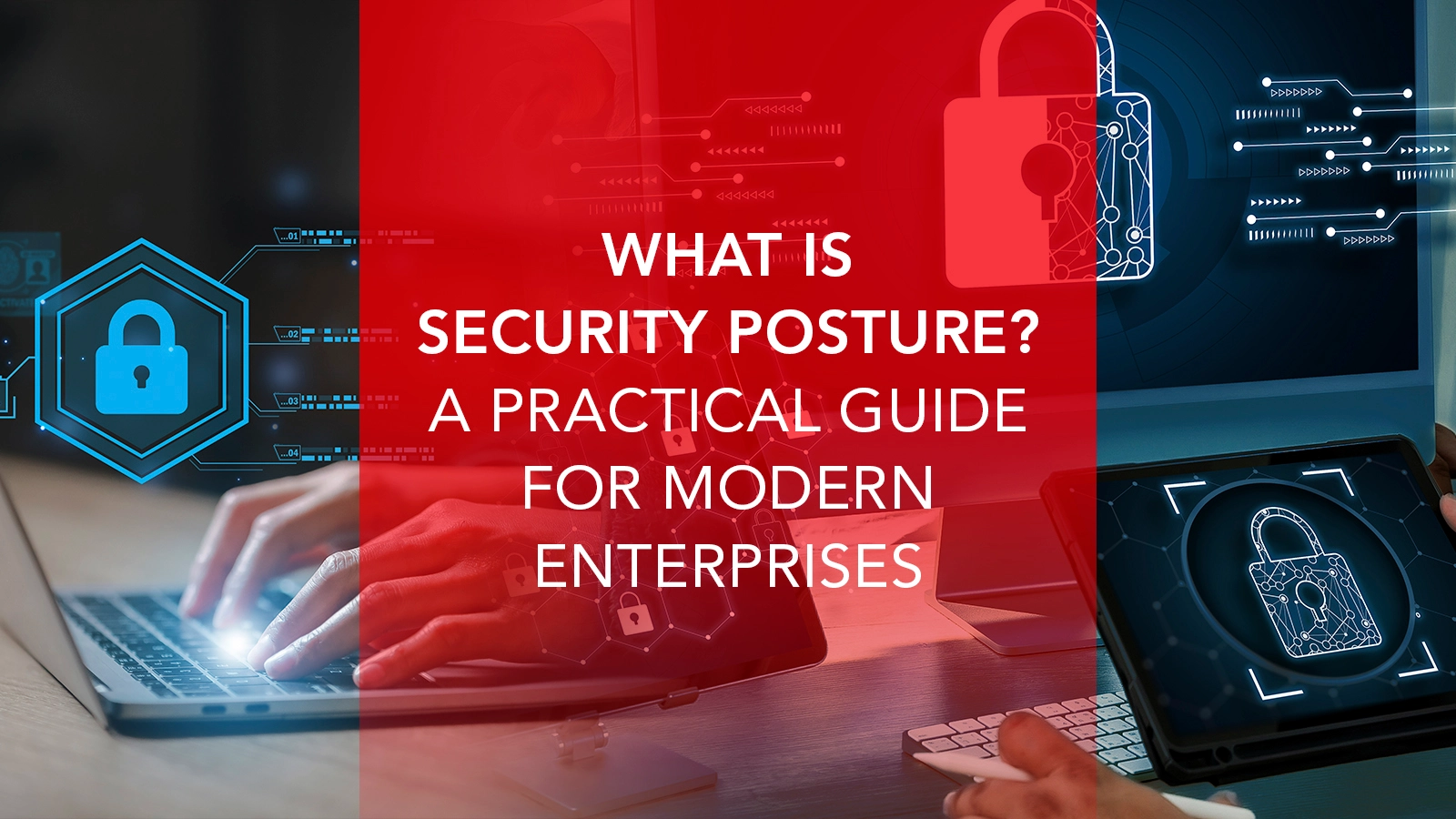The need for network security has increased in the age of cloud-connected networks and users as threats have grown and evolved over the years. Once upon a time, bad actors needed to physically access servers to get the data they are after. Not anymore. These days, anyone with an internet connection can exploit vulnerabilities to access our most sensitive data.
Considering the ease with which bad actors can access our data, managed detection and response has become an absolute necessity for anyone serious about protecting their assets and data. If you don’t know much about the benefits of this powerful security product, taking the time to learn a little more can help ensure you don’t find yourself on the losing end of an expensive data breach.
What is Managed Detection and Response?
Managed Detection and Response, or MDR, is a cybersecurity product that addresses the shortcomings of traditional antivirus and anti-malware softwares. It is based around 24-hour network surveillance and mounting an effective response if a threat does become a reality. It utilizes a combination of advanced technology and human expertise to accomplish this.
Very simply, MDR creates a baseline to represent typical network and user behaviors on organizational networks, alerts security teams to anything that looks suspicious, immediately and automatically reacts to any attacks that occur, and provides the tools organizations need to respond appropriately to minimize damages.
This is an oversimplified account, so let’s dig into the key components of managed detection and response and how they work together to keep our networks safe.
MDR vs Endpoint Detection and Response
One of the main technologies that drives MDR is Endpoint Detection and Response, or EDR. This is the part of the system that creates baselines for normal behavior and monitors endpoints for any perceived variation in that normal behavior. This is important because it can often point to a potential threat before it has a chance to do any real damage. As more and more of us migrate from the desk to remote endpoints like personal devices and computers, the importance of monitoring these endpoints grows ever larger. But MDR is broader in scope than EDR, and focuses on a more holistic approach to cybersecurity.
The Need for MDR
There are a lot of cybersecurity products on the market, and without expertise in the field, it can be difficult to determine which, if any, your organization needs. While many of us easily recognize the need for legacy products like antivirus and anti-malware products, we may not understand what goes into protecting our networks from new and evolving threats. Let’s take a look at some of the reasons MDR is an essential part of protecting networks in the twenty-first century.
BYOD Policies
Many modern companies allow employees to use their own devices for work purposes, through BYOD or Bring Your Own Device policies. While this may have some personal advantages for employees who want a centralized location to handle all their daily business, this provides potential vulnerabilities that cybercriminals can exploit to gain access into our networks. Monitoring each endpoint allows BYOD policies to continue, without exposing the organization to potential risks.
Poor Password Hygiene
With all of the password protected websites and apps we access on any given day, it’s understandable that many of us become overwhelmed by remembering so many passwords. This is likely the reason why so many of us practice poor password hygiene. Poor password hygiene involves things like reusing the same password on multiple accounts, keeping our passwords unchanged for years or decades, and choosing easy to guess passwords. MDR closes this weak spot by encouraging better password practices and monitoring usage.

In-House Security Team Constraints
For many years, we were able to handle most of our security needs with in-house teams that provided everything we needed. Today, many of those teams have often struggled to meet our evolving needs due strained resources. Moreover, as threats evolve and take forms not experienced before, these teams need the help of a dedicated team of security professionals with the expertise needed to handle a wide range of potential threats.
Compliance
For industries subject to rigorous compliance regulations, enlisting the services of an MDR provider not only shows that you take security seriously, but it protects your data in a way that backs up that claim. This is because managed detection and response solutions ensure all requirements are met and detailed reports are kept as proof.
For instance, GDPR (General Data Protection Regulation) regulated organizations are required to continually monitor and log all data access and processing activities. Organizations bound by HIPAA (Health Insurance Portability and Accountability Act) are required to monitor all systems to ensure all protected health information is kept confidential, available, and that integrity is maintained at all times. Each individual regulatory body has specific and important requirements that must be met.
If your organization handles the kind of data that could seriously disrupt the organization’s ability to operate or compromise an individual’s personally identifiable information, managed detection and response is a necessary level of protection.
Our Preventative Measures Will Fail
Try as we may, we can’t always prevent a determined cybercriminal from accessing our networks. We have seen recent data breaches tied to some of the largest companies on the planet, meaning organizations of any size can experience security incidents. Knowing this, response and risk mitigation is as important as prevention in protecting our data, our companies, and their reputations.
Key Components of MDR
Managed detection and response really represents a range of products working in concert with one another to address a range of vulnerabilities at once. By utilizing every tool we have at our disposal, we are able to better protect our networks and respond to threats appropriately. There are three buckets that are most important in the MDR landscape, which are monitoring, threat detection, and remediation.
24/7 Monitoring
Now that jobs have become flexible enough that employees can work wherever and whenever they want, it has become a 24 hour a day job to monitor the networks they access. Something as simple as practicing poor password hygiene or clicking on an email link can provide hackers with a door directly into the network.
MDR solutions rely on sophisticated technology and a team of experts who provide 24/7 real-time monitoring and analysis of clients’ networks for deviations from normal patterns. This enhanced visibility allows for rapid alerts and responses to mitigate any potential threats before they can cause significant damage. Data sources may include any of the following:
- Logs: Data logs from sources like servers, applications and security devices are aggregated into a centralized logging system for easier analysis. Those logs may be forwarded to a log management solution or SIEM platform, as needed.
- Endpoints: MDR monitoring services collect endpoint data regarding system activities, processes, file changes, and user behaviors to establish a baseline. If anything is amiss, that data is forwarded to the appropriate security personnel and stakeholders.
- Network Traffic: Like endpoints, network traffic usually exhibits baselines that represent normal behavior. Continuous monitoring and analysis of network traffic provides advanced notice when behaviors deviate from the established baseline.
- Other Sources: Depending on your network setup, there may be a number of other data sources such as cloud services and applications that can provide timely alerts to anomalous behavior. The more data sets an MDR service is able to collect, the more information it has available to stop perceived threats before they negatively impact the organization.
Threat Hunting
Managed detection and response services don’t just sit back and wait for an attack to occur. All reputable providers will actively hunt for real security threats using known vulnerabilities and tactics utilized by bad actors to gain access to networks. This type of proactive threat identification allows organizations to
Incident Response and Remediation
If an attack does occur, it is important to address it as soon as possible to minimize any damage. And a guided response and remediation is at the core of MDR solutions. Responses may include anything from quarantining affected directories to blocking access to specific users. By isolating the attack, we can ensure that the threat is unable to proceed further.
Remediation
When organizations do experience data breaches or other threats, it is important to handle them properly. Managed detection and response services ensure that all essential remediation processes are handled expeditiously and effectively. They also provide the ability for remote response, automatically taking remediation steps while removing the time lag between notification of in-house security teams and a response. The remediation process looks like this:
- Detection and Analysis: Continuous monitoring of an organization’s network and everything connected to it allow MDR services to quickly detect anomalies and generate alerts based on the nature and scope of the threat. After the threat has been determined, analysis is performed to assess the method used in the breach and determine the appropriate next steps.
- Containment: MDR services will immediately take steps to isolate affected areas of the network and restrict access to limit the extent of the damage. These threat containment measures are implemented temporarily, while a comprehensive solution is devised and security team members are notified to ensure all policies and procedures are followed.
- Removal of Threat: Managed detection and response solutions then remove the threat, including any malware or malicious files, and addresses the vulnerabilities that allowed the threat to occur.
- Recovery: Once the system has been locked down and the threat has been eradicated, MDR services will assist in restoring the system to its normal operation. Threat removal is verified, data is restored, and the system is tested to ensure all vulnerabilities have been patched and that no issues remain.
- Post-Incident Review: The last step is to review the incident and all actions taken to remediate the threat. This includes detailed reports on threat parameters, remediation procedures, and the impact on the organization. MDR solutions compile and submit these reports to stakeholders and regulatory bodies, where required.

Benefits of MDR
There are some great benefits you can expect when engaging with a managed detection and response service. Some provide peace of mind in knowing that your data is well protected, while others ensure your organization’s reputation holds up in the case of a threat incident.
Network Visibility
Gaining visibility into our networks and everyone connected to them through 24/7 cloud, network, and endpoint monitoring gives us the information we need to address threats before they have a chance to do any damage. It also allows us to see which security products are working and which ones aren’t. This allows us to make timely changes to our security stacks to provide much better protection for our networks and data.
Incident Triage
Some threats are more serious than others. By gaining as much information on them as we can, we can determine which ones require immediate remediation, and which ones are unlikely to give us huge headaches. Addressing the most pressing security concerns first gives us a leg up in the information security game.
Faster Response Times
Providing parameters that allow our managed detection and response solutions to automatically respond to incidents in predetermined ways allows us to respond with little to no time lost. This can significantly reduce the amount of damage done.
Improved Client Trust
Often, every person and entity that we do business with has sensitive information locked away in our vaults. That’s why a data breach affects more than just the target organization. Showing clients that you take security seriously lends to increased trust in our organizations.
Choosing the Right MDR Provider
There are a lot of managed detection and response providers out there, and choosing the right one involves conducting a thorough assessment of both your network and your needs. For instance, an organization that is bound by regulatory bodies like those in healthcare and finance, a data breach can present a much bigger problem. For this reason, a more robust option is needed. No matter what industry you work in, there are some attributes that your provider will possess to protect your data well.
A Cloud-based solution
While in-house security teams provide value in protecting your data through custom software and hardware configurations, choosing a cloud-based solution for MDR results in a more efficient use of time and resources. This is because cloud-based EDR solutions provide unified management of the system as a whole, instead of configuring and managing each aspect of the network individually. The cloud-based approach streamlines these processes and provides easy scaling, which will prove to be a big asset as your team grows.
Customizability and Scalability
As your needs continue to grow and evolve, working with an MDR provider that is able to customize your service and scale to meet your new needs will ensure adequate protection scales without any hiccups. A customized solution ensures that the needs of your organization are met, including specialized needs for those with specific security policies and operational constraints.
Scalability is also important. Every new employee has the potential to contribute multiple endpoints to your network, each one requiring the same level of defense that your current network of devices does. By coordinating security practices and protocols that easily migrate to new users and devices, we can ensure that they don’t represent vulnerabilities in our networks.
Integration with Your Other Security Platforms
There is no stand alone product that will provide all the protection your network will ever need. The best line of defense is made up of numerous products that work in concert to provide a well-rounded security solution without any gaps. A good managed detection and response service will provide seamless integration with your other security platforms, allowing you to use each one to its full potential.
Two of the most popular security platforms on the market, Security Information and Event Management (SIEM) and Security Orchestration, Automation, and Response (SOAR), integrate seamlessly with Managed Detection and Response services for enhanced detection and response, better streamlined operations, improved incident management, and better context and threat intelligence.
The integration of each of these platforms delivers specific cyber security insights that help keep our networks safe. Here are a few key functions these integrations perform.
Integration with SIEM
- Data Sharing and Enrichment: MDR collects and analyzes data from sources like endpoints, networks, and applications, and sends it to the SIEM platform. This data is often enriched by the MDR service with additional context and threat intelligence, which can then be correlated with other security events and logs.
- Correlation and Alerts: MDR can send alerts to the SIEM based on detection of potential threats. The SIEM platform can use this information to correlate with other security events, helping to identify patterns and detect complex threats.
- Historical Analysis: A historical perspective is a powerful tool we can utilize to better understand attack patterns and improve threat detection. By storing historical data from MDR services, SIEM platforms can perform long-term analysis and identify trends.
Integration with SOAR
Automated Response: Rapid responses to security events can help significantly minimize damage to the organization. MDR services can alert your SOAR platform to potential threats, which automatically execute predefined responses. These responses may include isolating affected systems, blocking IP addresses or users, initiating additional investigations, and more.
Incident Management: SOAR platforms combined with managed detection and response capabilities work together to manage advanced security threats. When your MDR service detects a threat, it provides the SOAR platform the information it needs to orchestrate a response across security tools and relay that information to in-house security teams.
Reporting and Documentation: MDR services can also relay the necessary information to SOAR platforms so that they can generate detailed reports on all aspects of security incidents, including any actions taken, the outcomes of those actions, and timelines that outline the entire event from beginning to end.
Integration with NIDS
Detection and Alerts: Network Intrusion Detection Systems (NIDS) provides real time monitoring services, looking for potential security threats, and generating alerts when anomalies are detected. MDR services integrate these alerts into their monitoring and response framework to better understand the potential impact of the threat.
Common Pitfalls and How to Avoid Them
We all have different shopping habits. Some of us pick up the newest technology the day it is released, while others are okay with a decent knockoff at a good price. However we choose to decide when making our everyday purchases may be of little consequence in the grand scheme of things, but when choosing managed detection and response providers, failing to take some important considerations into account can lead to an ineffective system. Here are some common pitfalls when choosing a provider, and how we can avoid them.
Going with the cheapest option
For the frugal among us, the best price is often the first consideration. If we can get an affordable product that performs just as well as the higher priced competitor, we feel that we got a great deal. When it comes to protecting your data, however, this is not the best approach. Choosing the provider that best meets your needs is a far better option.
Not Investigating the Provider’s Track Record
In order to choose the provider that will provide the best protection and best meet your needs, examining their track record is a great way to find that information. If the company has been around for a while and has a proven track record of detecting and responding to threats efficiently and effectively, you know that you will get top tier protection. On the other hand, if the company appears young and inexperienced, you may want to think twice before enlisting them to protect your most valuable assets.
Not Understanding the Organization’s Needs
At the end of the day, a managed detection and response provider can only meet your needs if you have a clear understanding of what they are. This includes ensuring providers meet the requirements of any regulatory agencies, but it also includes ensuring they provide the full scope of services required to align with your monitoring and response needs, as well as the ability to integrate with your existing security services and tools. Virtual Armour offers a wide range of managed detection services that meet the needs of most organizations with the advanced teams and technology to give you complete peace of mind.
Conclusion
In conclusion, Managed Detection and Response (MDR) has become an indispensable tool in today’s cybersecurity landscape. As threats grow more sophisticated and widespread, MDR offers a comprehensive, proactive solution to safeguard sensitive data and protect organizations from costly breaches. With the ability to monitor, detect, and respond to threats 24/7, it fills critical gaps left by traditional security measures. By integrating advanced technologies like AI, machine learning, and behavioral analysis, MDR ensures that even the most elusive threats are identified and contained quickly. As businesses continue to evolve in an increasingly digital world, investing in MDR is not just about preventing attacks—it’s about staying ahead of them.
[/et_pb_text][/et_pb_column] [/et_pb_row] [/et_pb_section]





